Bangkok, the capital of Thailand and the gateway to Southeast Asia for adventure-seeking travelers, is an undeniably vibrant city with an endless array of activities and constant stimulation. With its penetrating smells, spicy flavors, and heat that can be suffocating. At first, we hated it, but over time, we grew to love it, and now we remember it with fond nostalgia.
There are countless places to visit and even more activities to experience in Bangkok. Due to its vast size, a single visit is rarely enough to truly grasp the essence of the city.
This guide is the result of nearly 10 years of exploring Southeast Asia, including many visits to Bangkok. Here, you’ll find recommendations for temples, palaces, markets, parks, as well as places to stay and eat.
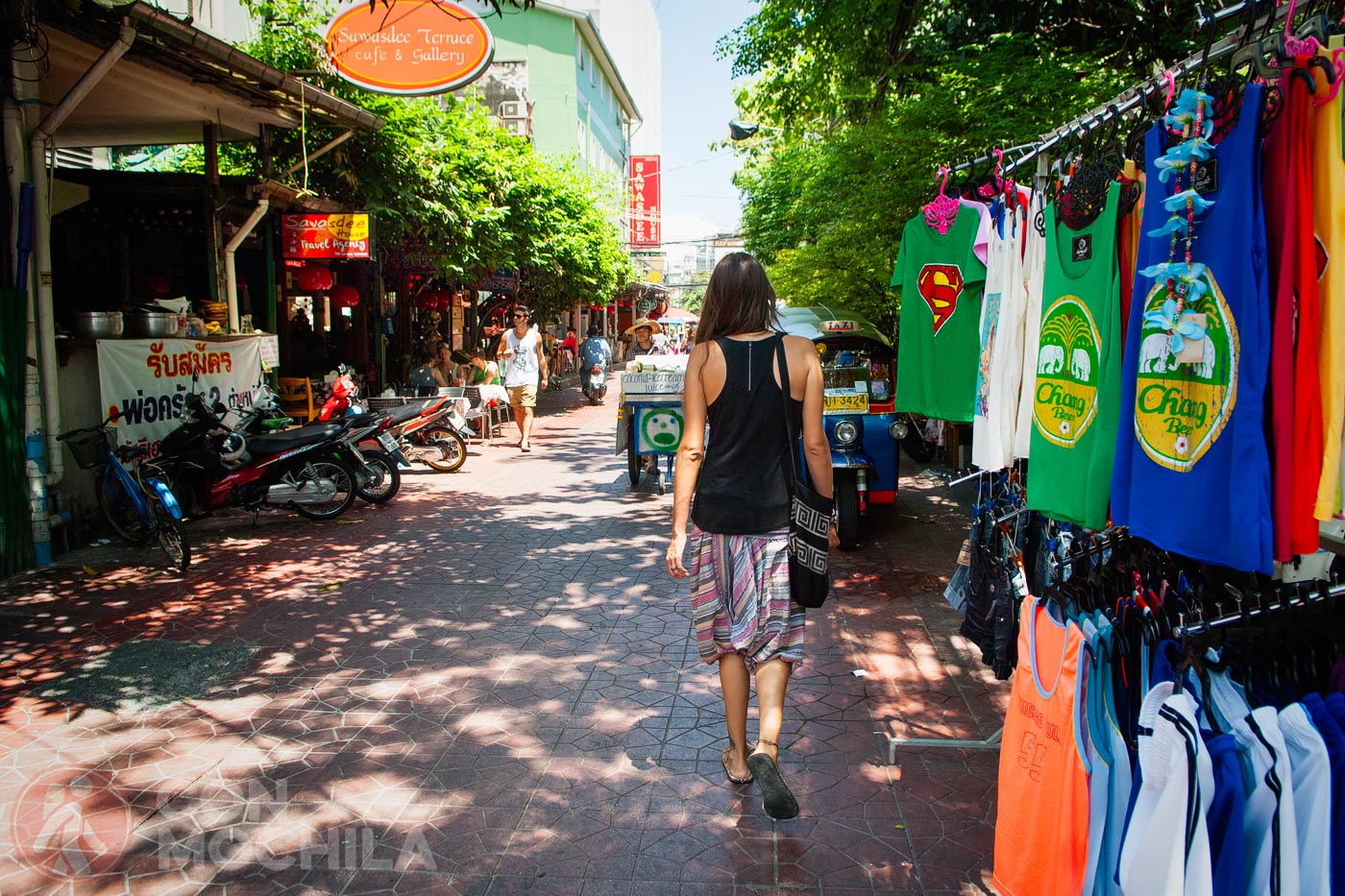
Additionally, you’ll find advice on how to get to Bangkok and how to leave. If you’re traveling around Thailand, exploring both the north and south, you’ll likely pass through the city multiple times.
Bangkok has a tropical climate, which means it is hot and humid year-round, with frequent rain. Still, we love visiting the city at any time of the year.
Travel advice: Check out our article on the best time to visit Thailand for month-by-month climate information (coming soon).
To begin with, we always recommend getting good travel insurance Thailand. This can save you a significant amount on medical expenses and, most importantly, ensures that the insurance covers the costs upfront, so you don’t have to pay out of pocket.
In the previous article, we go into more detail about healthcare in Thailand, as well as tips on how to get the best insurance (and save money).
Nowadays, finding hotels, guesthouses, or restaurants in Thailand with free Wi-Fi is pretty common. However, there are still those who prefer (or need) to stay connected at all times.
That’s why we’ll show you how to get an eSIM Thailand card with internet— now also available with unlimited data.
Suvarnabhumi International Airport is the main gateway for flights from Europe. The older Don Mueang Airport still operates both international and domestic flights, with airlines like Nok Air and AirAsia offering numerous flights to the islands and other regions of Thailand. A bus connects the two airports.
You can often find affordable flights to Bangkok if you’re flexible with your travel dates. Be sure to check out our tips for finding cheap flights, allowing you to save money for your travels in Thailand.
Don’t miss our article “Ways to get from Bangkok Airport (Suvarnabhumi) to Khaosan Road.” (coming soon)
Thailand’s railway network runs north to south across the country. The overnight train is a convenient option for long journeys to Chiang Mai, the islands, or Had Yai if you’re heading toward the Malaysian border.
The main station is Hua Lamphong. On the top floor, near the cafés, you’ll find agencies that sell combined tickets (train + bus/minivan/ferry) for travel to the islands. Be sure to book in advance if you want a sleeper car.
Bangkok has several bus stations, so keep in mind that the station you’ll depart from depends on your destination:
Minivan Station: Minivans depart from the Southern Minivan Station to many cities. They offer a comfortable way to travel, though safety can be a concern due to some reckless drivers.
The online platform 12go.asia allows you to book buses, trains, or ferries in Thailand quickly and easily. Check our article for more information if you have any questions about the booking process.
The Grand Palace in Bangkok is one of the most important and impressive complexes in Thailand. Located next to the Chao Phraya River, it is a collection of buildings that served as the royal residence from the 18th to the 20th century.
Notable structures include Wat Phra Kaew, which houses the Emerald Buddha, a giant guardian, a pantheon, a chedi, and a currency museum.
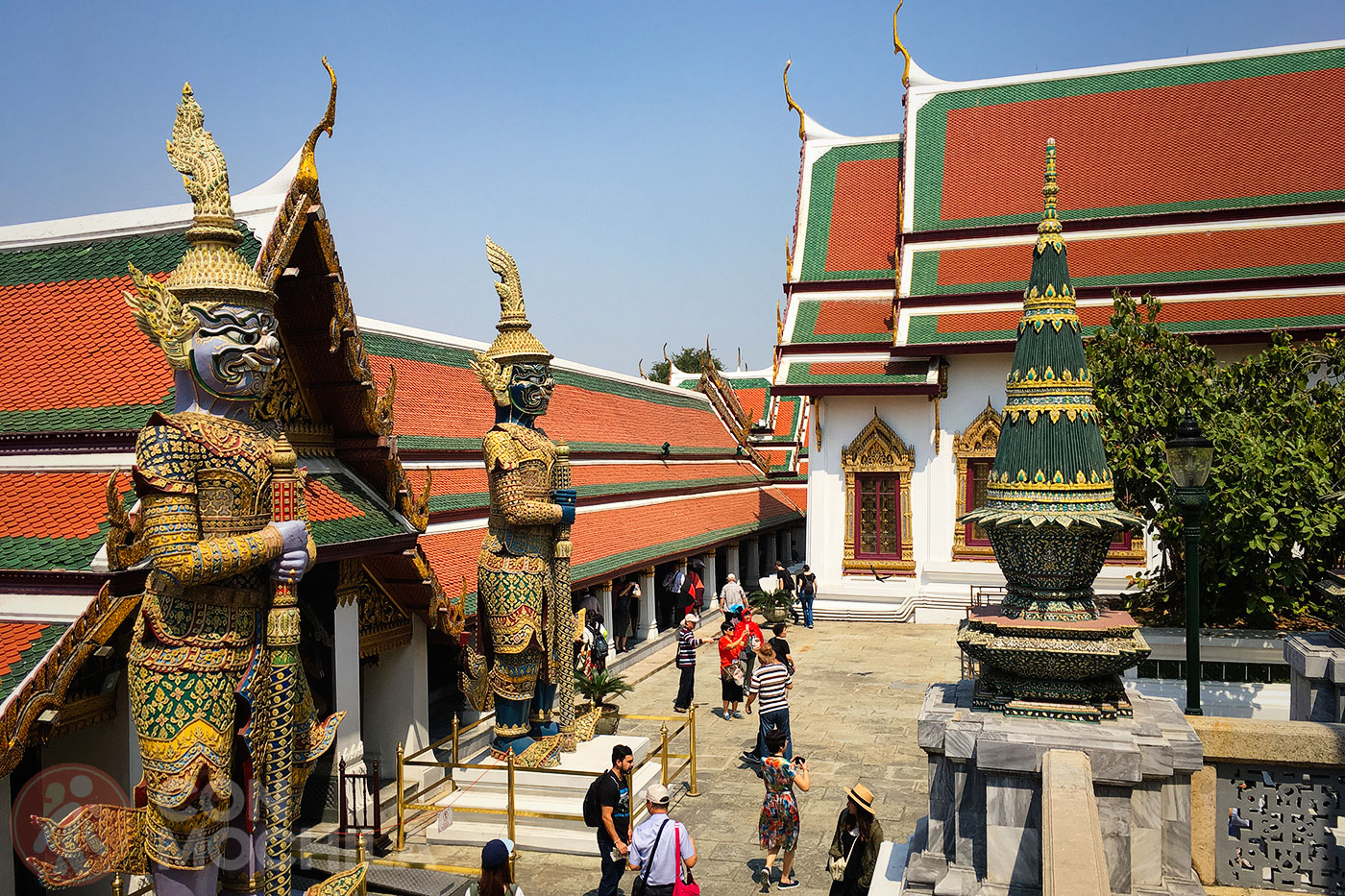
This site is always crowded with tourists, and since the passing of King Bhumibol, it fills with devoted followers every Sunday who continue to pay tribute to him.
Wat Pho, or the Temple of the Reclining Buddha (officially known as Wat Phra Chetuphon Vimolmangklaram Rajwaramahaviharn), is a royal monastery. Its origins date back to 1656, when a temple called Wat Podharam was built during the Ayutthaya period.
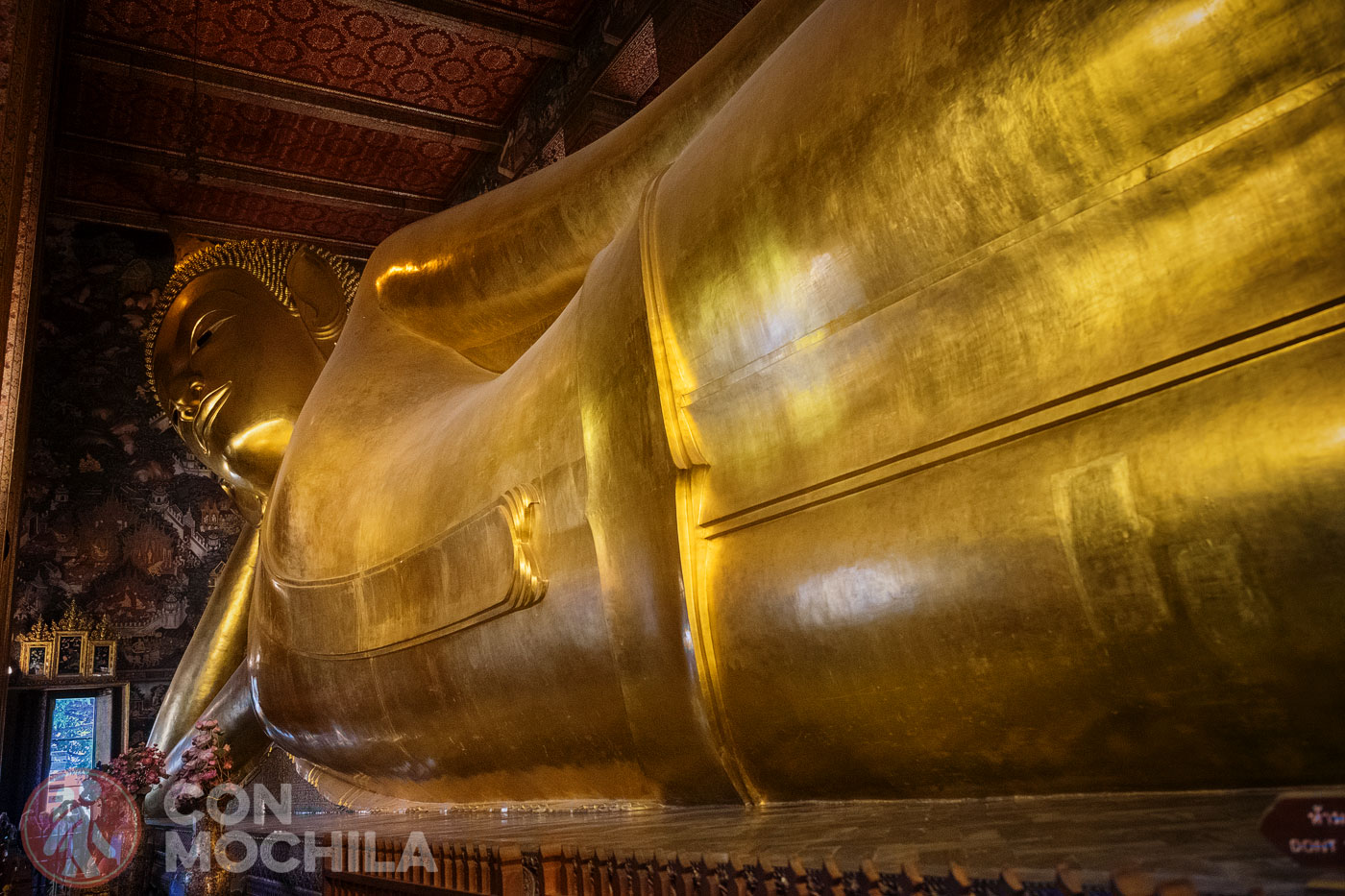
Today, Wat Pho houses a collection of art and Buddha images, but most visitors come to see the largest of them all: the Great Reclining Buddha. This enormous figure, stretching almost the entire length of the pavilion, measures 46 meters long and 15 meters high.
Wat Arun, or the Temple of Dawn, is one of Thailand’s most famous and frequently visited temples, located in Bangkok’s Yai District, next to the Chao Phraya River.
Its architecture is unique, featuring a large central Khmer-style tower standing 86 meters tall. The entire complex is breathtakingly beautiful.
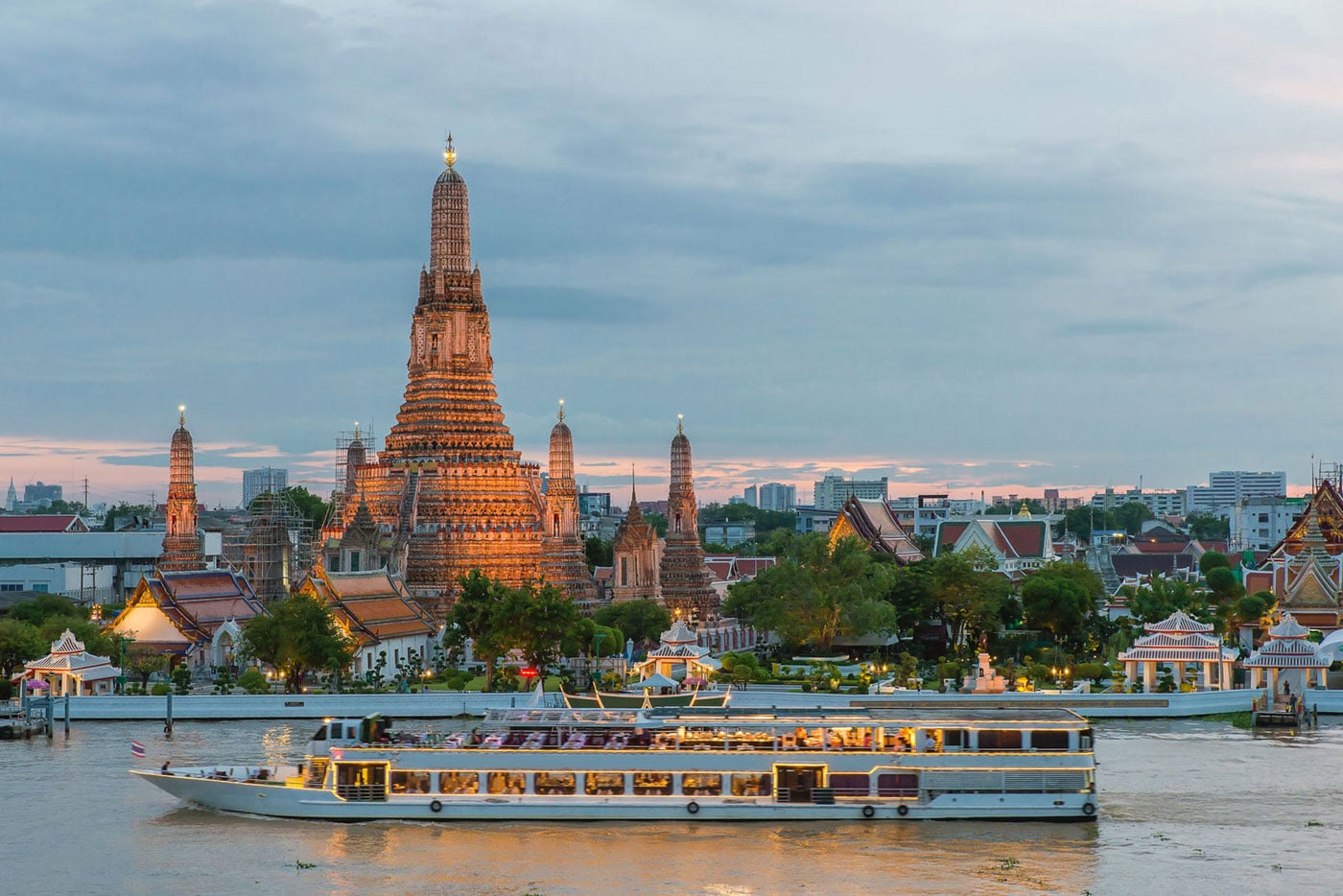
Despite its name, Wat Arun is stunning at any time of day. Even at sunset, when the temple is illuminated, its beauty is on full display. Hopefully, the scaffolding will be removed soon to restore its full grandeur.
Wat Intharawihan is home to a towering 32-meter-high golden Buddha, which is said to have taken more than 60 years to complete. The temple itself is not particularly remarkable, but one room contains lifelike statues of monks that are sure to give you goosebumps.
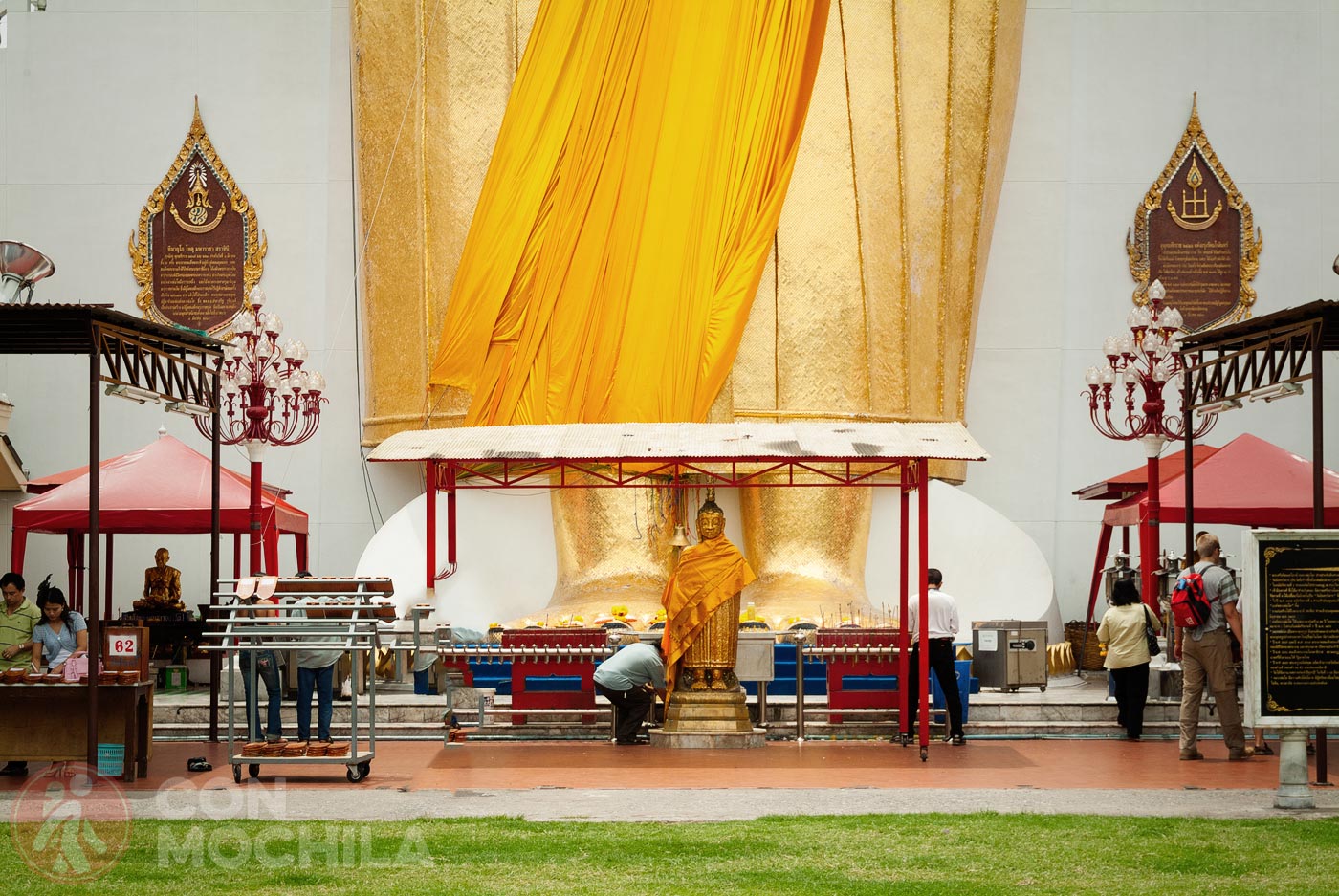
Visitors can place gold leaf on the feet of the giant Buddha, offer prayers, and light incense sticks. While getting there by tuk-tuk is easy, convincing drivers to avoid clothing store stops can be tricky.
The Golden Mount, also known as Wat Saket, is a golden hill topped by a temple offering panoramic views of Bangkok. To reach the top, you’ll need to climb 318 steps that spiral around the mountain, passing bells that visitors ring as they ascend.
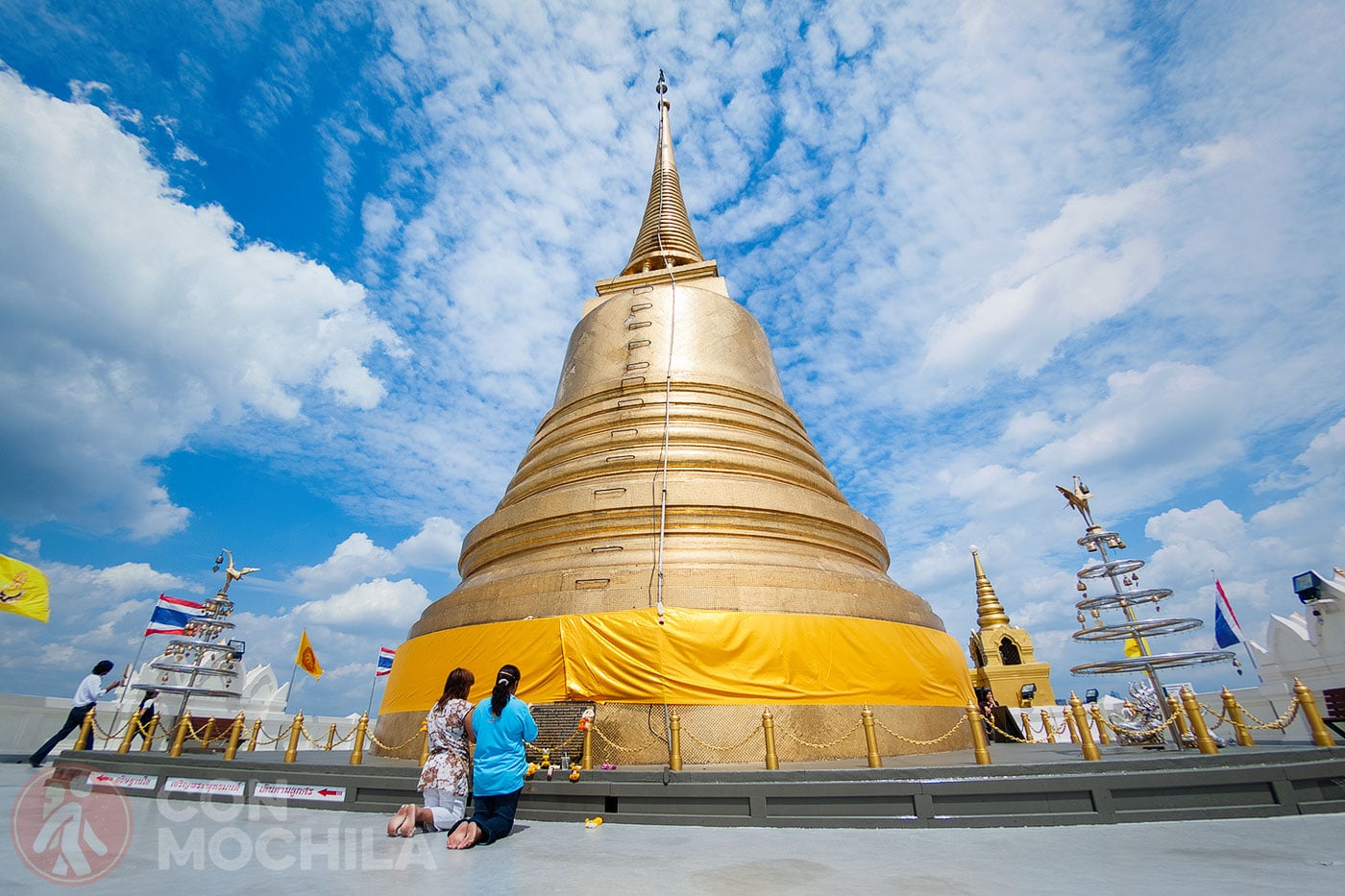
Once at the top, you’ll enjoy a 360-degree view of Bangkok. The temple features a golden chedi. Just be careful when removing your shoes, as the floor can get extremely hot, so watch your step!
Bangkok’s Chinatown is one of the most chaotic areas we’ve ever visited. In the narrow alleys, you’ll find countless market stalls selling everything from shoes to endless varieties of jewelry.
You can also sample Chinese cuisine. Though many menus feature shark fin soup, and we encourage you to read up on the harmful methods used to obtain it before considering trying it.
For guided experiences, check out these tours:
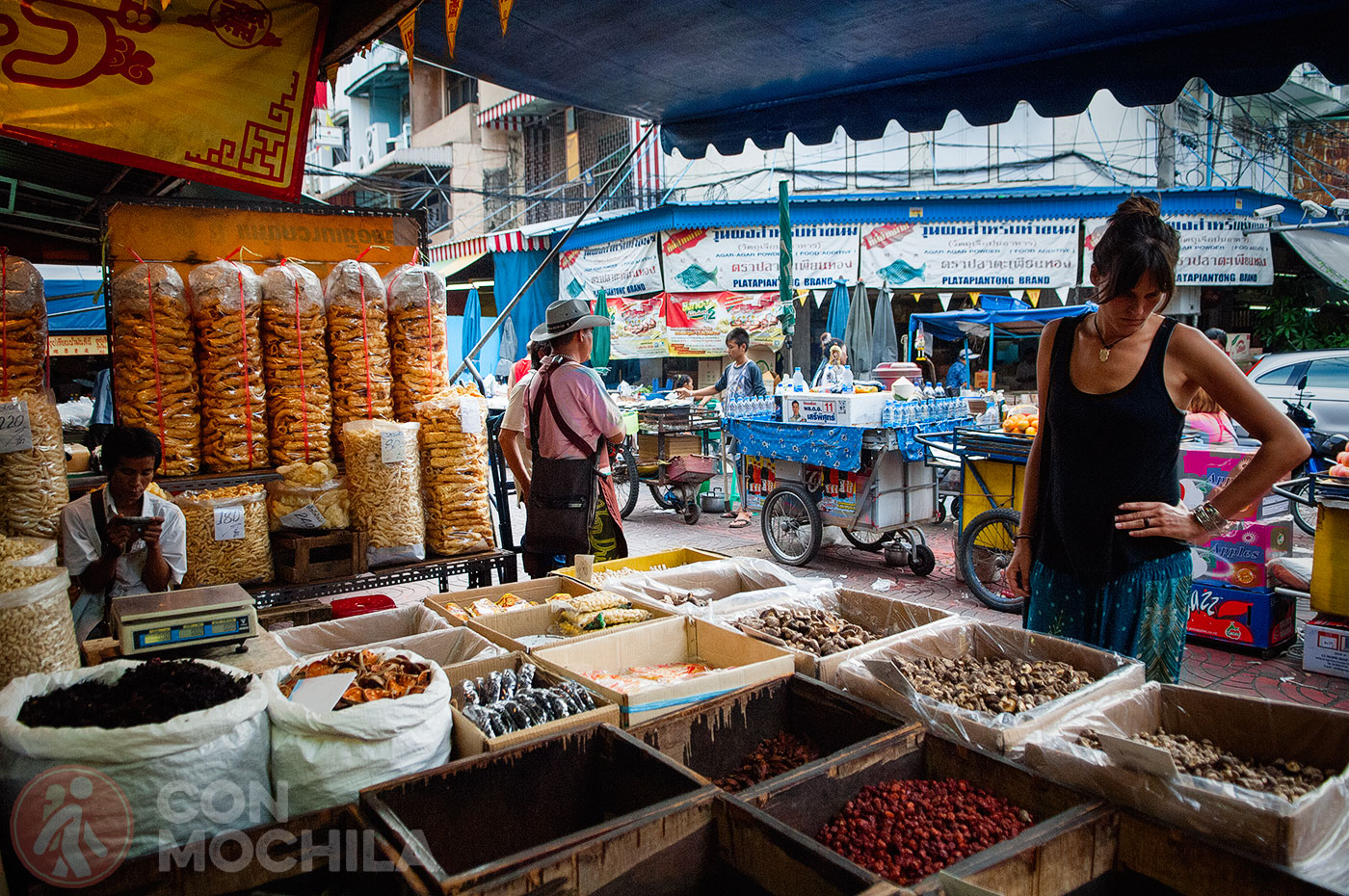
As for temples, Wat Trai Mit houses a 3-meter-tall golden Buddha weighing more than five tons. Next to Chinatown, you’ll also find the Indian quarter, Phahurat, where the market offers a wide range of goods typical of the Asian subcontinent.
Lumphini Park is a green oasis of nearly 60 hectares in the heart of Bangkok, located at the intersection of two bustling avenues. It’s a popular spot for walking or exercising, either solo or in groups.
As you wander through the park, you’re likely to come across one of the many large monitor lizards that roam freely and swim in the park’s ponds, much to the amazement of tourists.
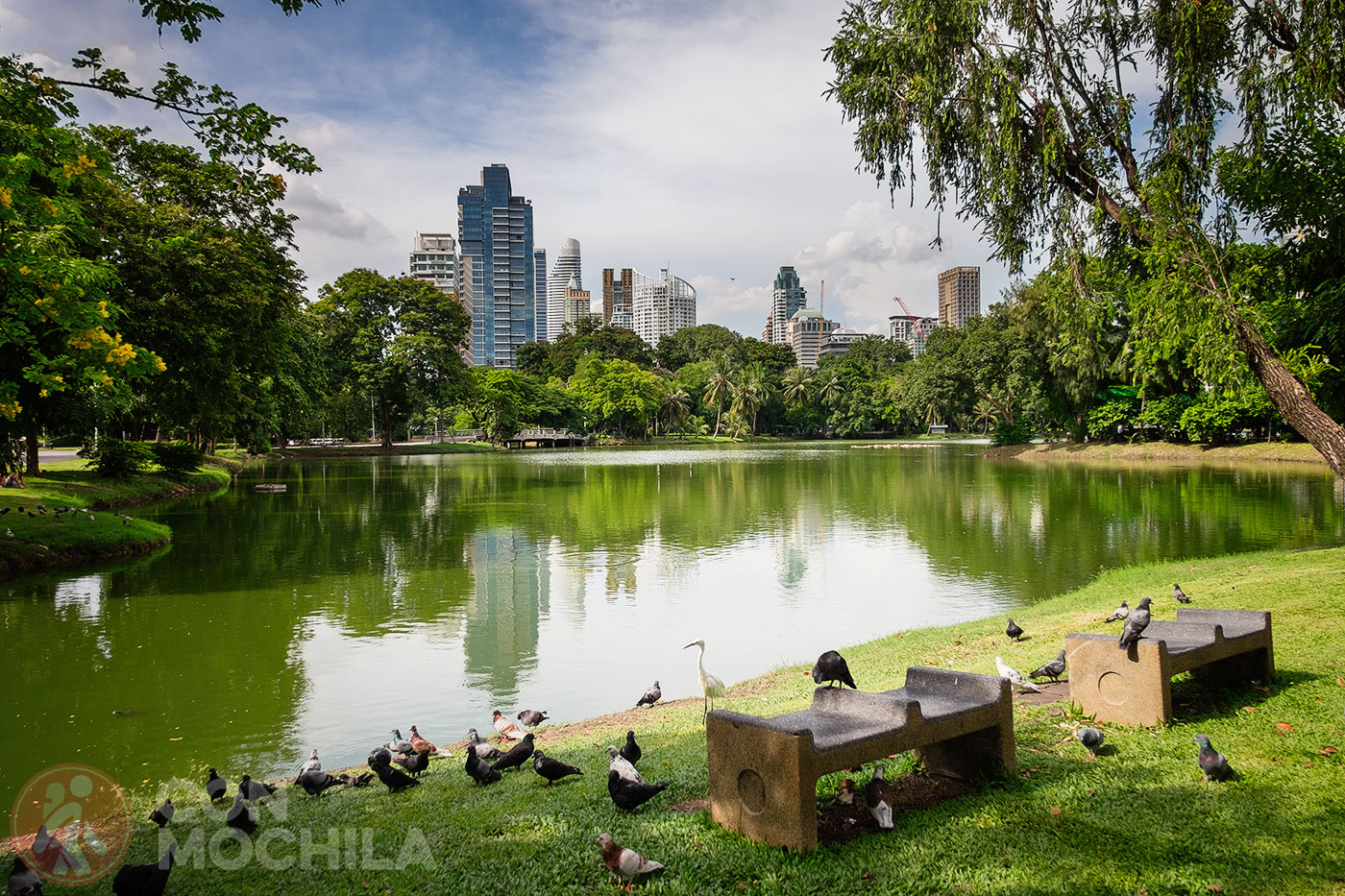
Whether you want to walk, meditate, or ride a scooter, Lumphini Park is the perfect escape from the city’s chaos.
Jim Thompson was an American architect and businessman in the early 20th century who played a key role in the liberation of Thailand and helped grow the Thai silk industry. His mysterious disappearance in the jungle during a trip to Malaysia has led to many theories, making his story even more intriguing.
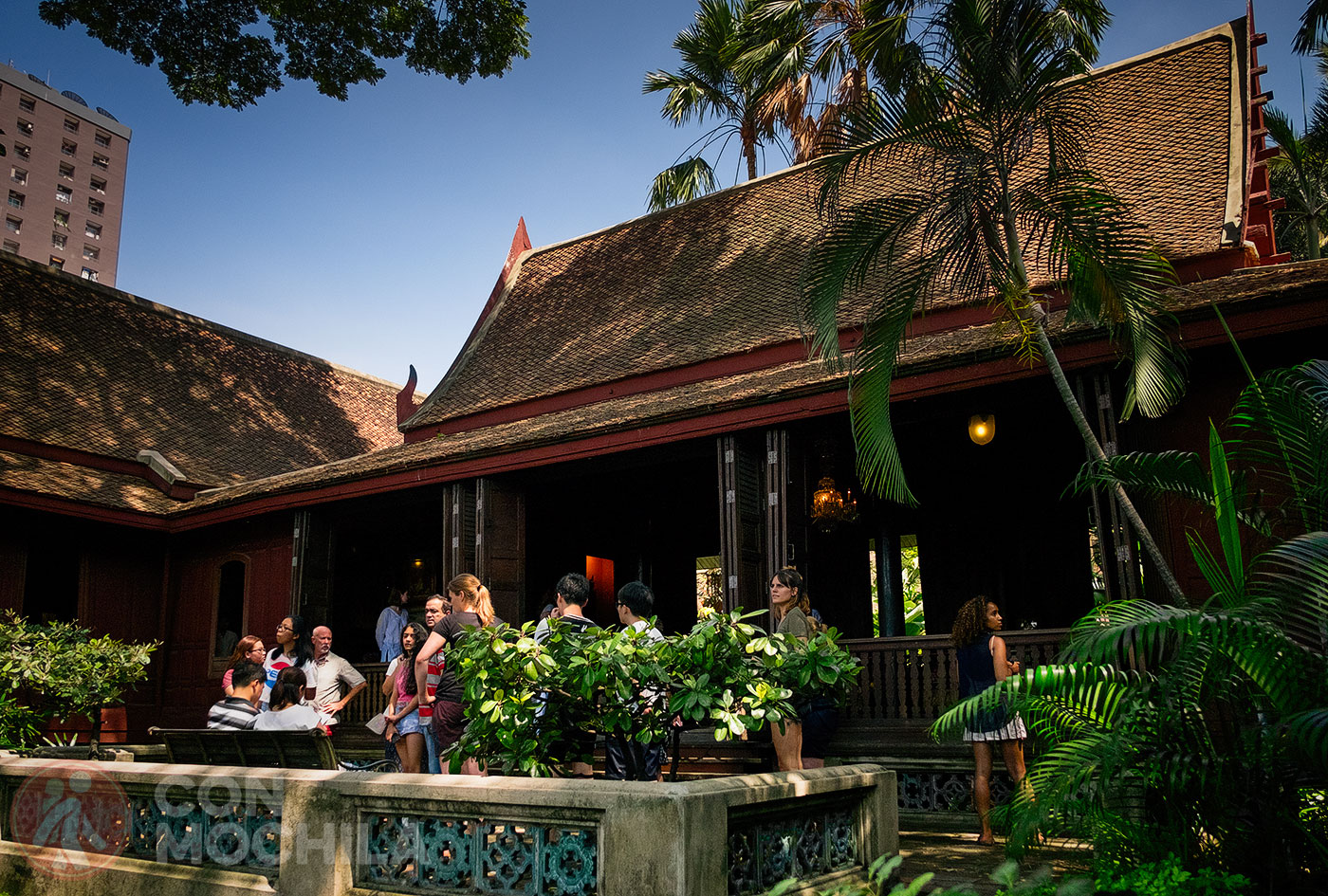
His Bangkok residence, the Jim Thompson’s house, built in traditional Thai architectural style, consists of six teak houses that he collected from different regions of Thailand. Today, visitors can tour this beautiful home and admire its collection of Asian art.
There are several markets to explore in Bangkok, including the amulet market, the Ratchadapisek night market, Pratunam, Saphan Put, and Pak Khlong.
But if you’re looking for the biggest and best, Chatuchak Market is a must-visit. This weekend market features over 15,000 stalls selling everything from crafts and flowers to clothing, accessories, and food.
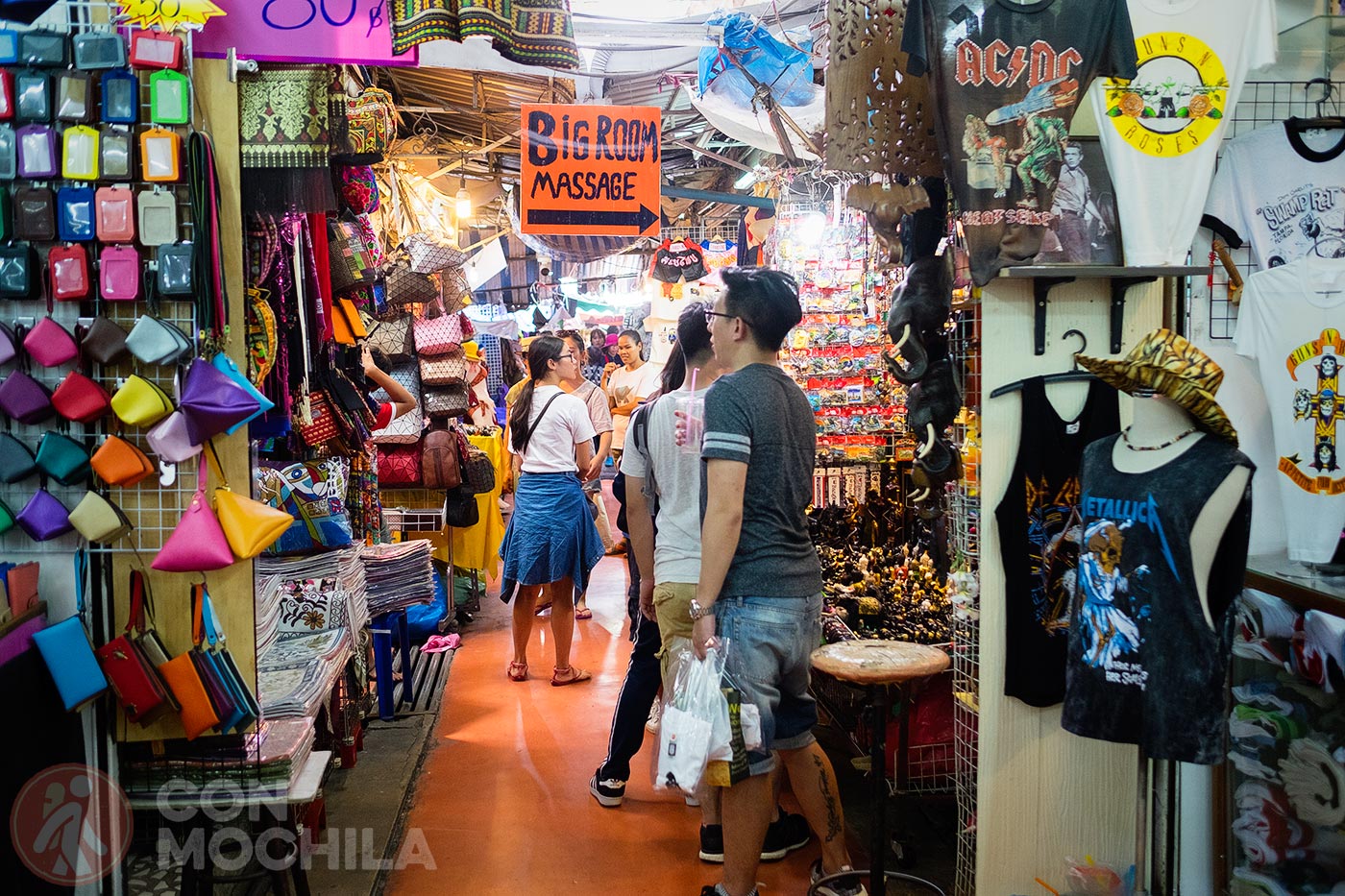
We know you didn’t come to Thailand to shop, and your backpack may already be full, but whether for curiosity or souvenirs, don’t miss out on Chatuchak.
While some may be put off by the crowds of backpackers, Khaosan Road and Rambuttri are unique streets worth a visit, even if you don’t plan to stay there.
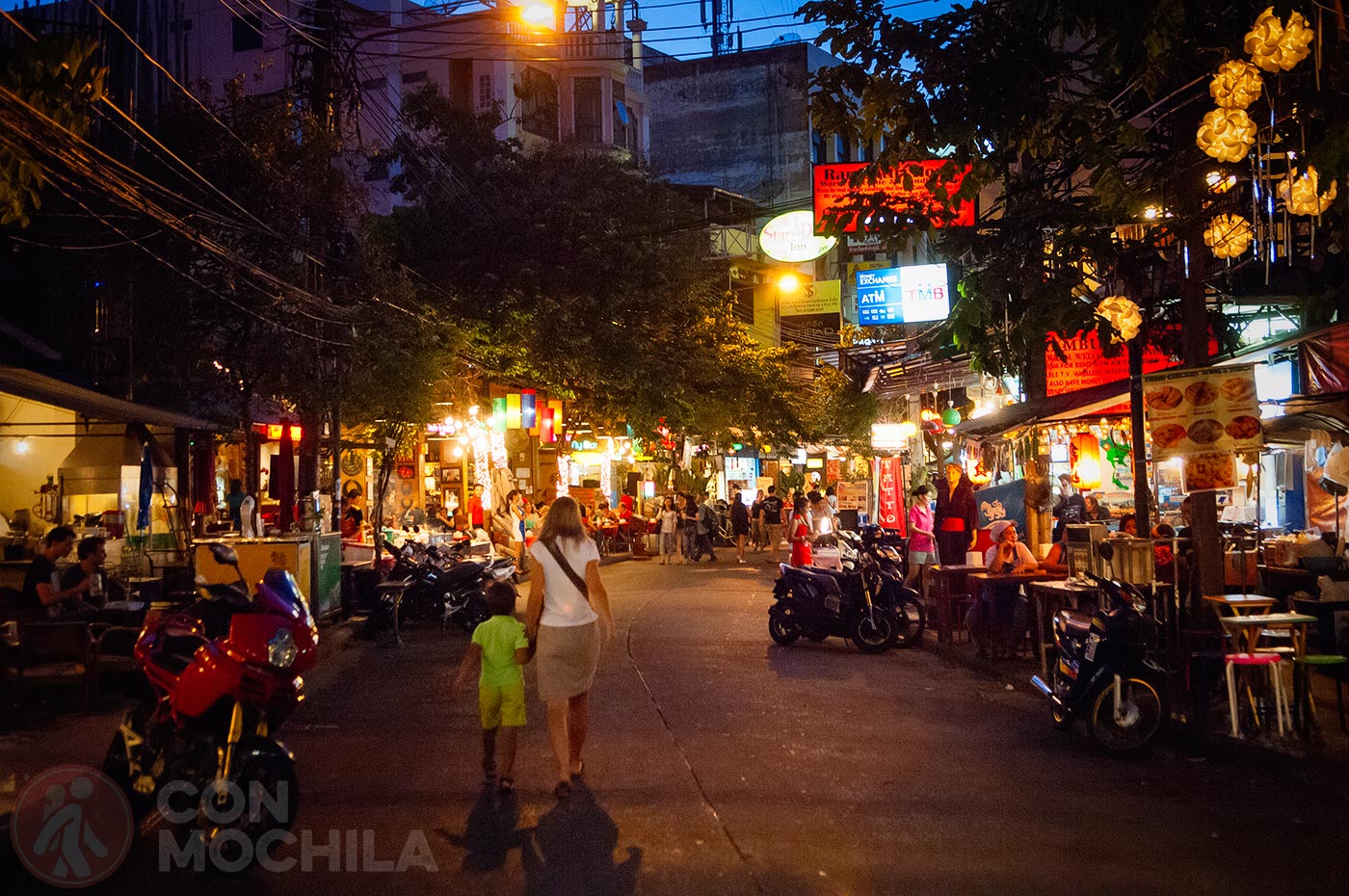
You’ll find bars, souvenir shops, massage parlors, and offers for just about any activity you can imagine in Thailand.
Navigating Bangkok on the boats that cruise the Chao Phraya River is both practical and pleasant. This river serves as a major highway, winding through the city from north to south, and is frequently used by locals.
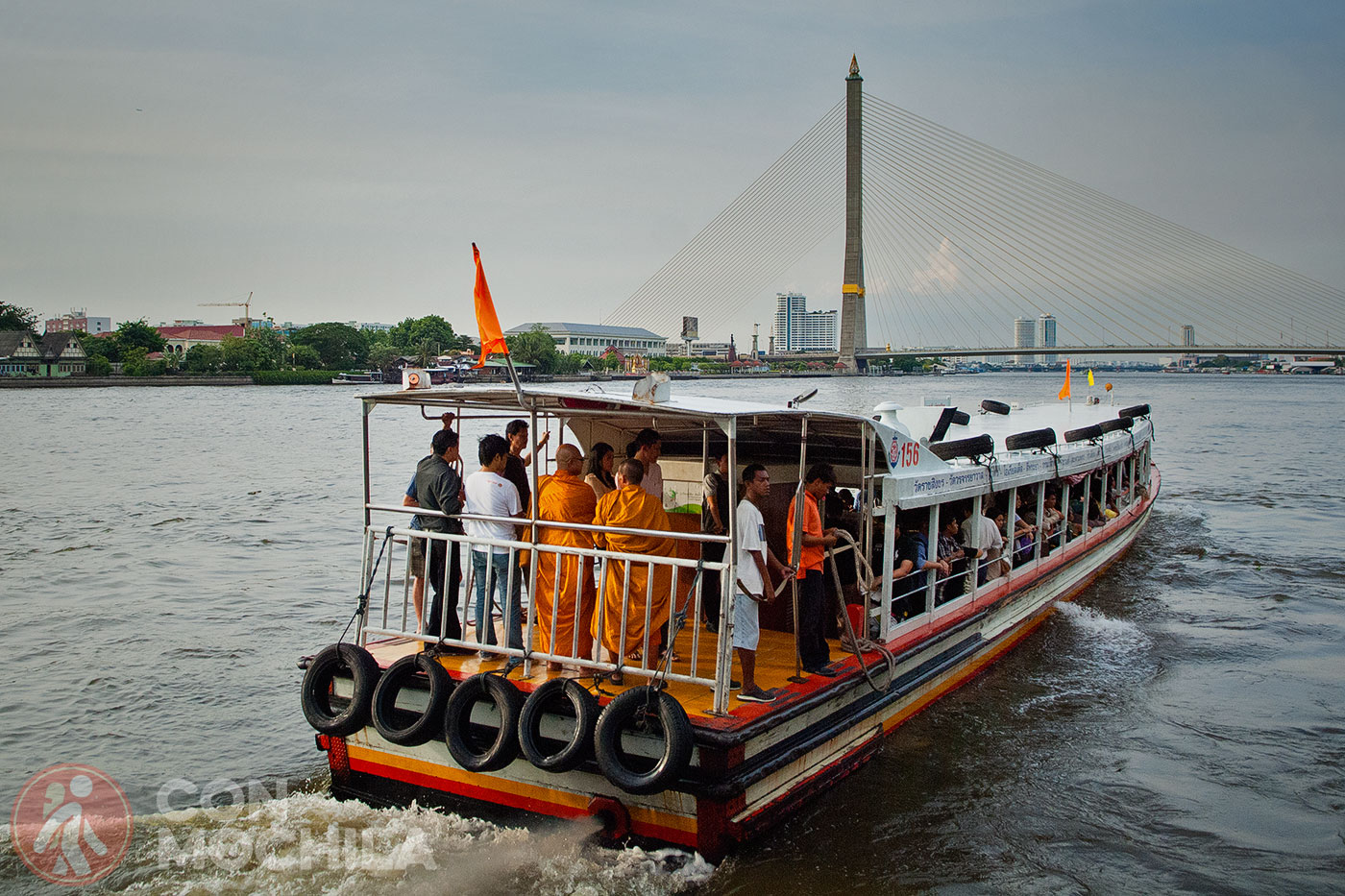
Smaller boats offer hour-long rides through narrow canals, providing a charming way to explore local life. You can book one online: Canal Tour with Long-Tail Boat in Bangkok.
At some point, you’ll likely take a ride in a tuk-tuk, so why not start in Thailand’s capital? However, be cautious of common scams: you may pay a low fare to visit 4 or 5 attractions, but be pressured to stop at tailors and jewelry stores so drivers can earn commissions.
If you’re not interested, be clear about what you negotiate, or book a tour online. Here are some interesting options:
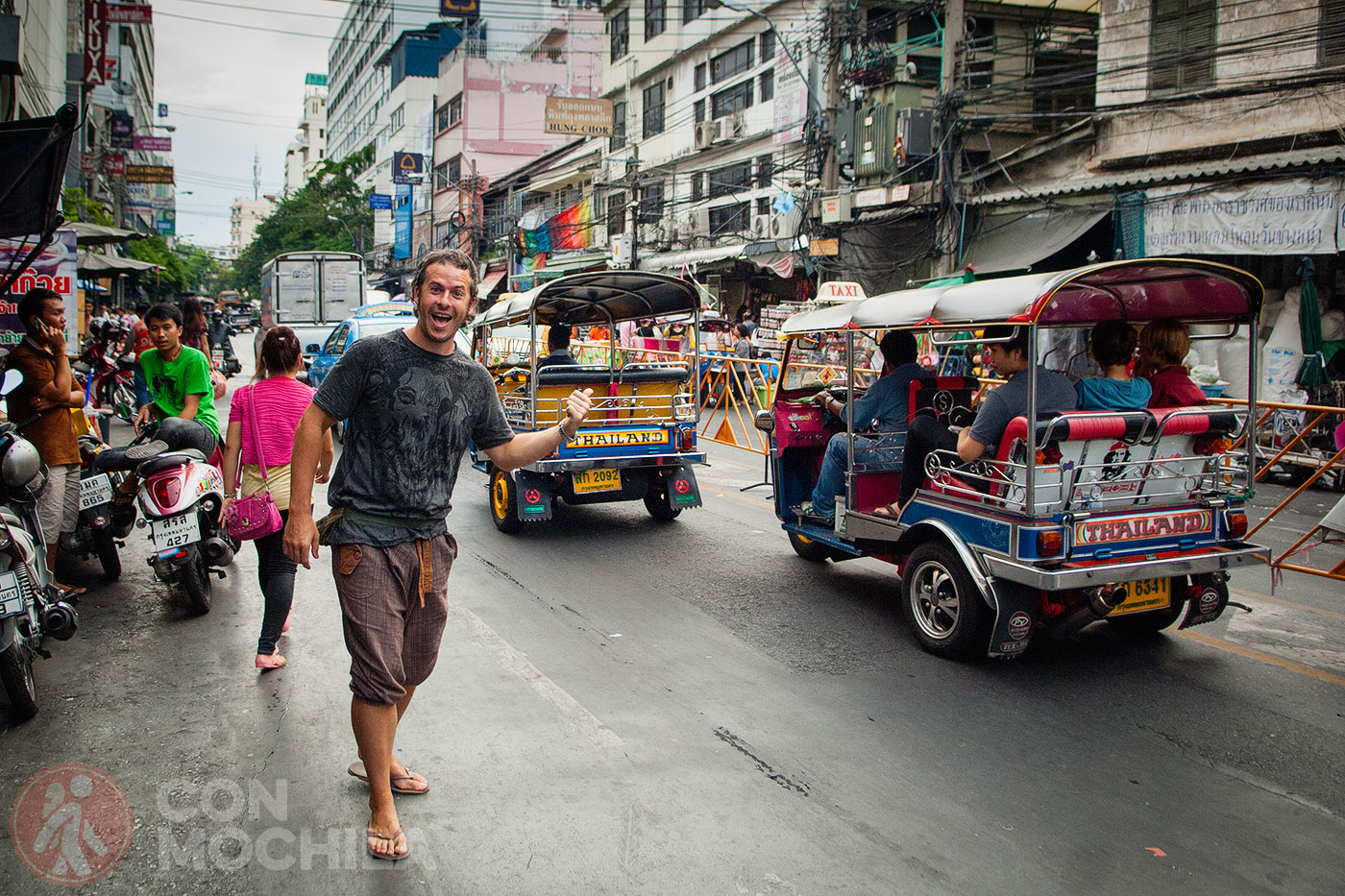
Street food is everywhere in Bangkok. You can explore Thai cuisine by trying different dishes, most of which cost no more than 40 baht. However, you might get overwhelmed by the amount of plastic used to serve everything…
If you’re interested, check out “Less Plastic in Your Backpack: 10 Ways to Reduce It.” (coming soon)
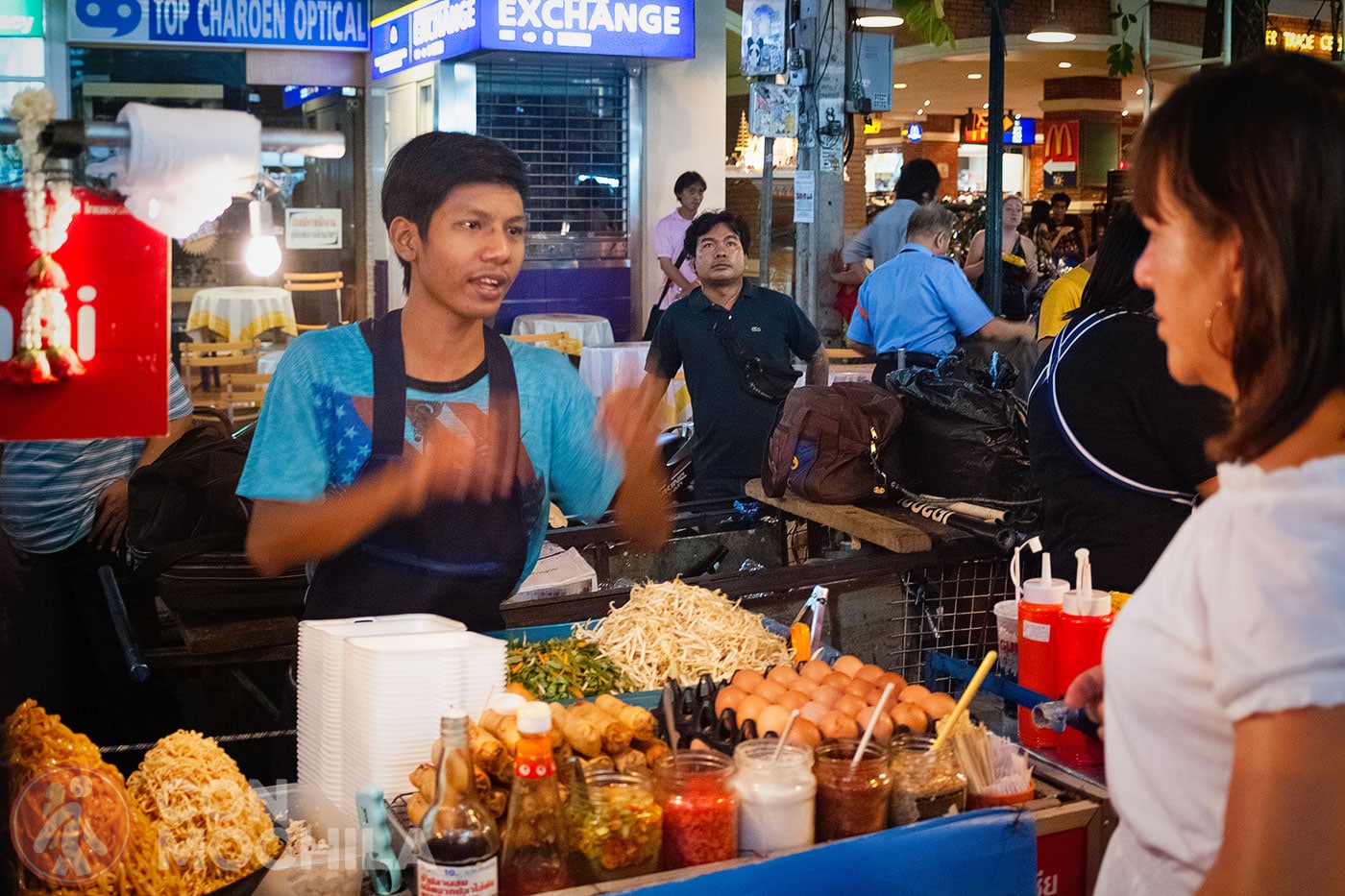
It’s good to be informed about Bangkok’s red-light districts, especially if you’re traveling with children and don’t plan to visit these areas. I mention this because when booking a room, you might unexpectedly end up with explicit décor and music in your accommodation. It’s rare, but it can happen. We can confirm.
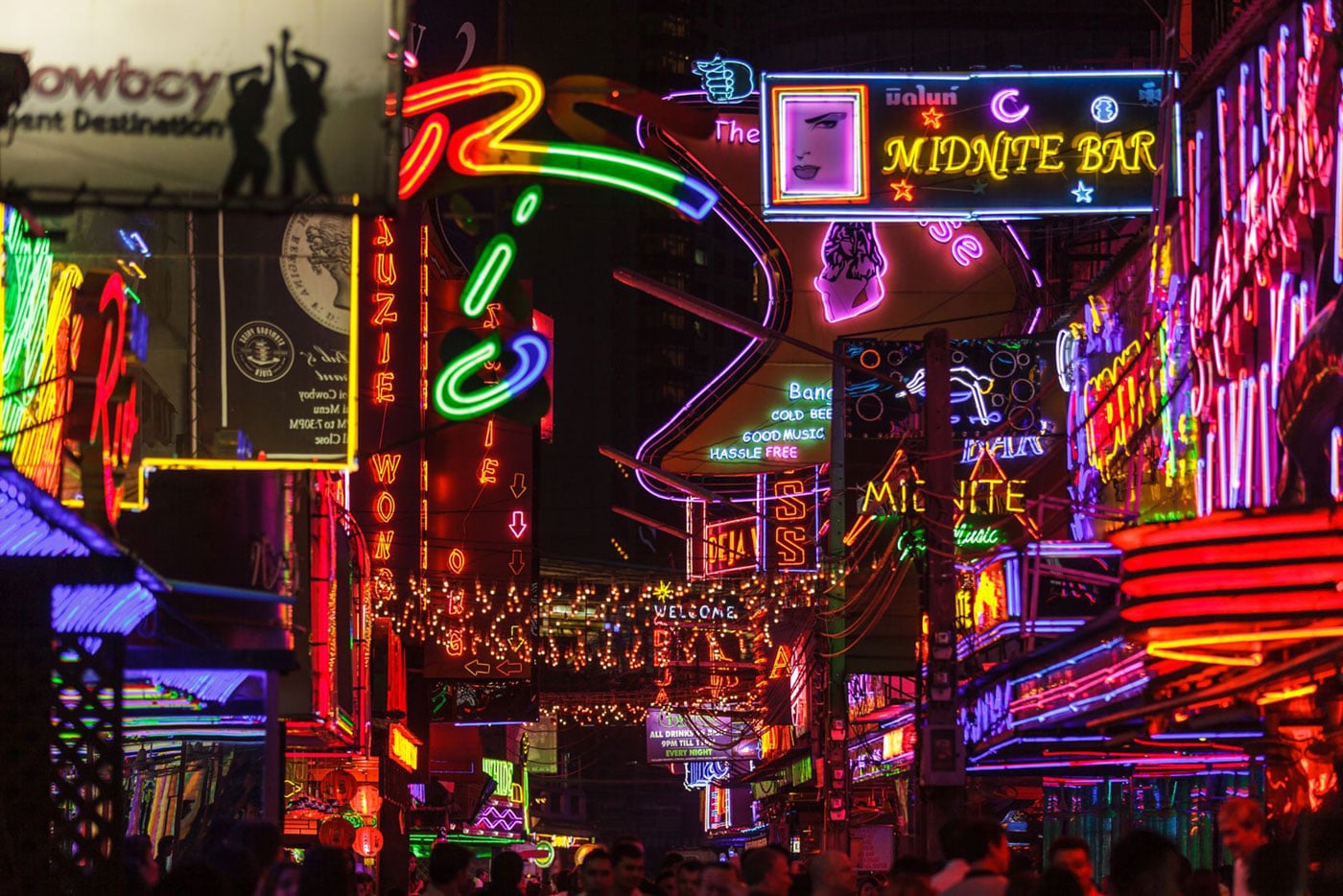
However, not everything that glitters is gold. These districts include Patpong, Soi Cowboy, and Nana Plaza. For more information, check out our friend Luis’ detailed explanation in the link above. (coming soon)
If you like to plan your visits or prefer exploring Bangkok with a guide, here are some interesting tours to get to know this spectacular city:
Whether it’s your first or last Thai massage, it will likely happen in Bangkok. Thai massage centers are everywhere, in tourist spots, shopping areas, and residential neighborhoods. Thai people love it, and they’ll never stop offering it.
Let yourself be pampered by trained hands!
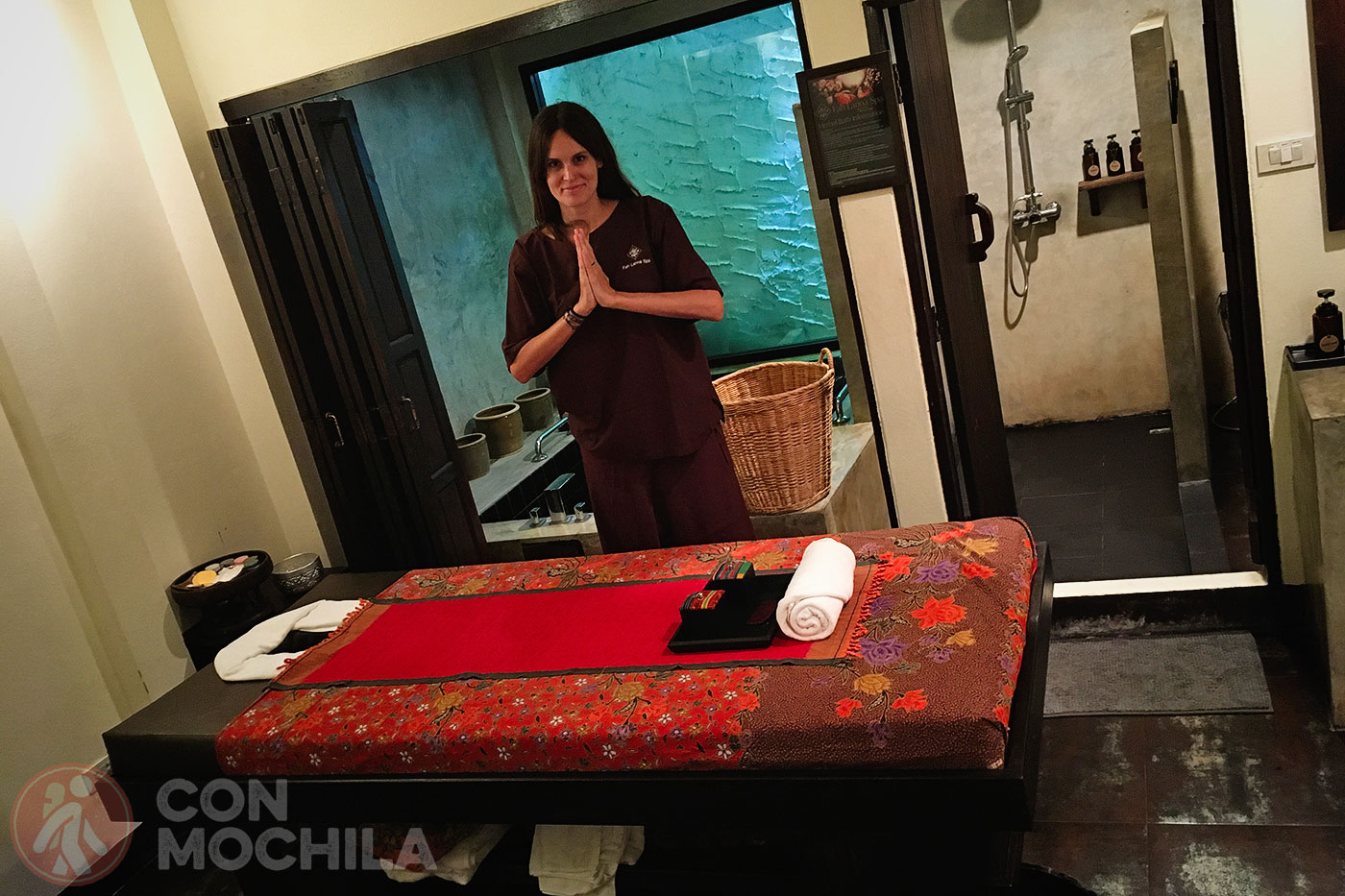
You’re more likely to want a cooking class toward the end of your trip, after you’ve sampled the dishes and fallen in love with Thai cuisine.
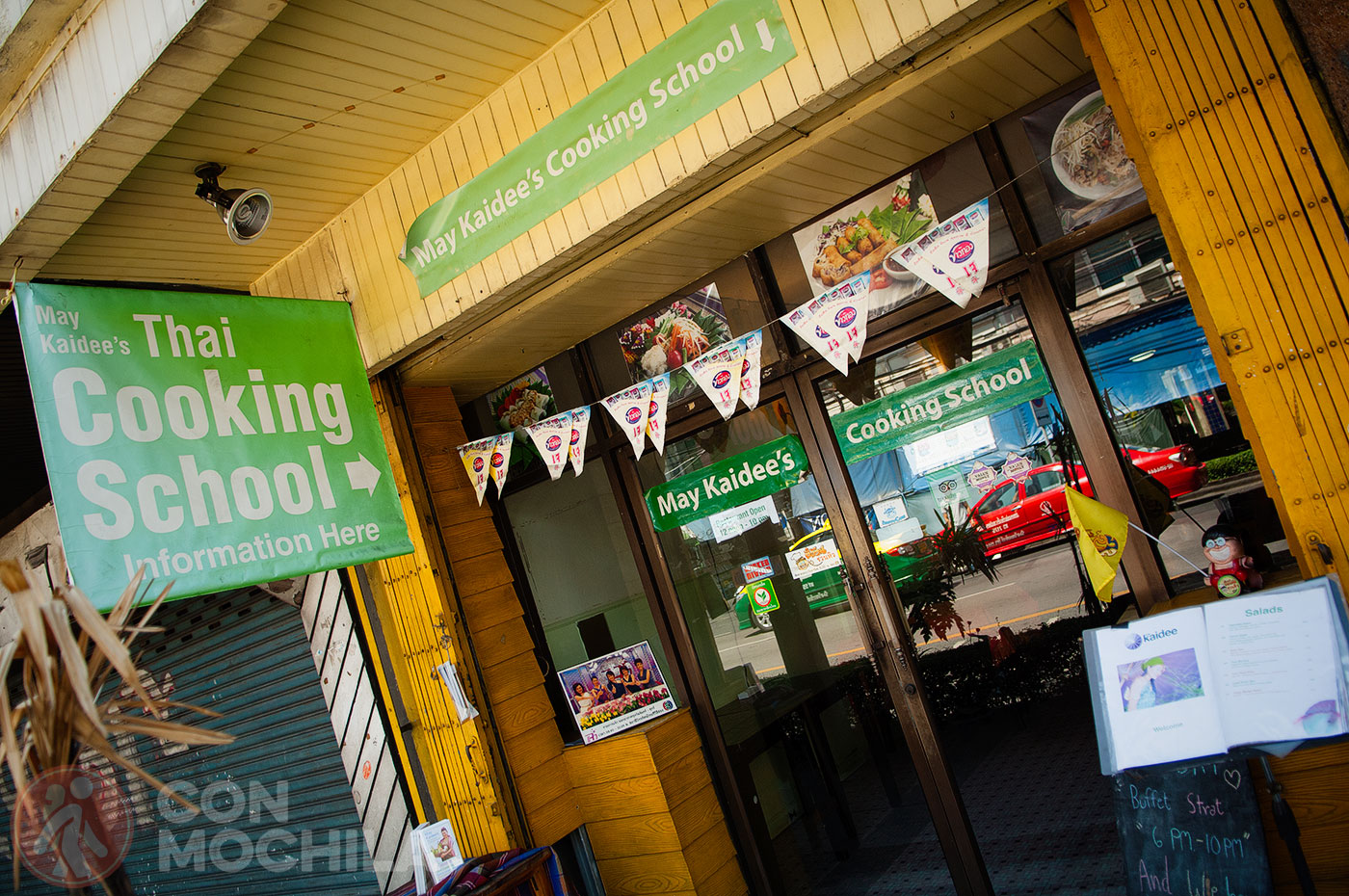
Many schools in the city offer classes, but you can also find them through agencies, tourist spots, or restaurants. You can also book them online: Half-Day Traditional Thai Cooking Class with Market Tour in Bangkok.
While we’re not fans of this sport, even after spending time in Thailand, we’ve never attended a fight.
However, Muay Thai, a form of boxing that is almost a national symbol (perhaps more abroad than within Thailand itself), piques tourists’ curiosity and attracts many to its training schools.
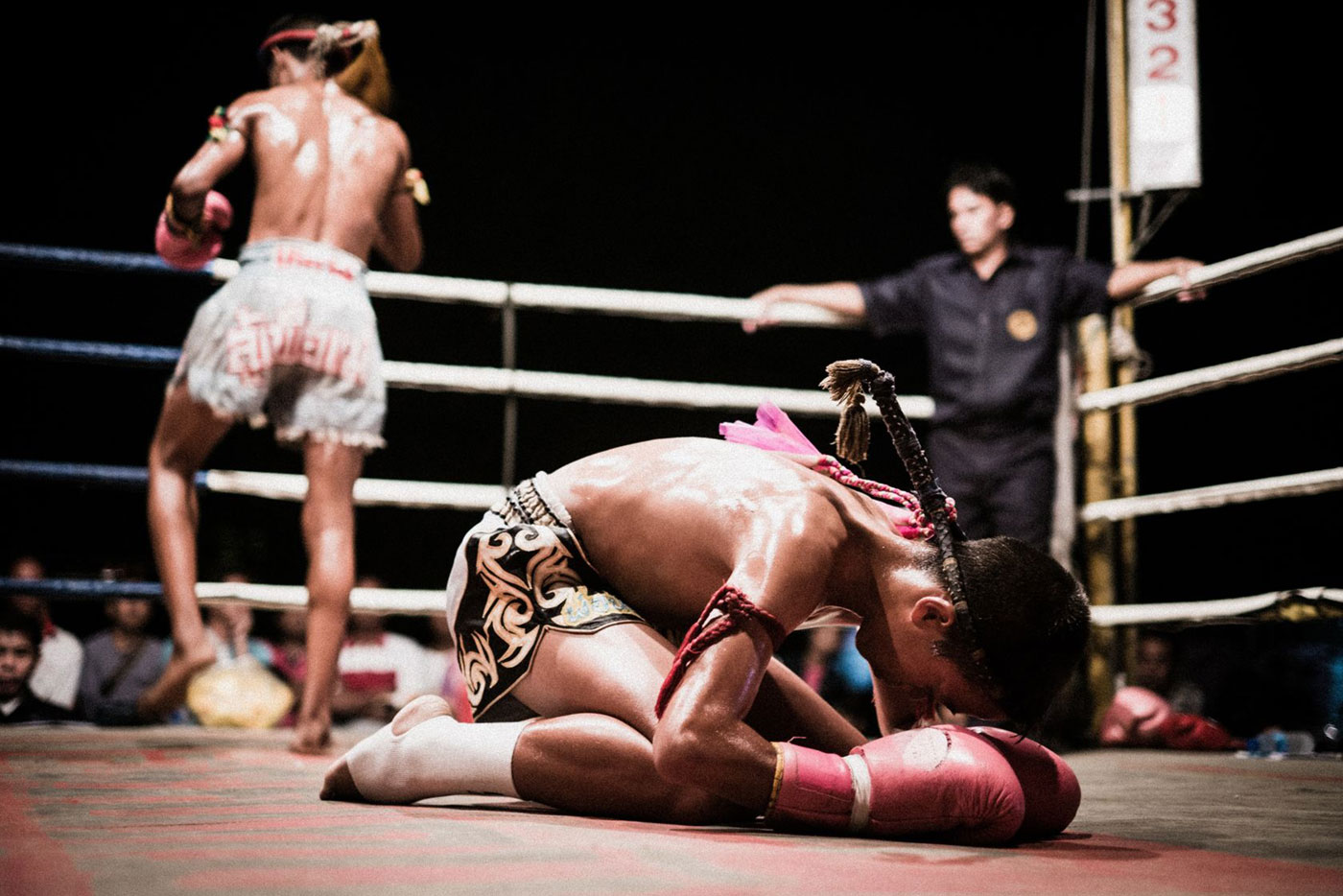
Lumpinee and Rajadamnern are two of the most famous arenas where you can enjoy a close-up Muay Thai evening at Rajadamnern Stadium.
Ask a Thai person about the most popular mountain area, and they likely won’t mention the north, as a foreigner might. Instead, they’ll point to Khao Yai, about two and a half hours from Bangkok by car.
Here lies Thailand’s first major national park, sheltered under the “big mountain”—the meaning of Khao Yai in Thai.
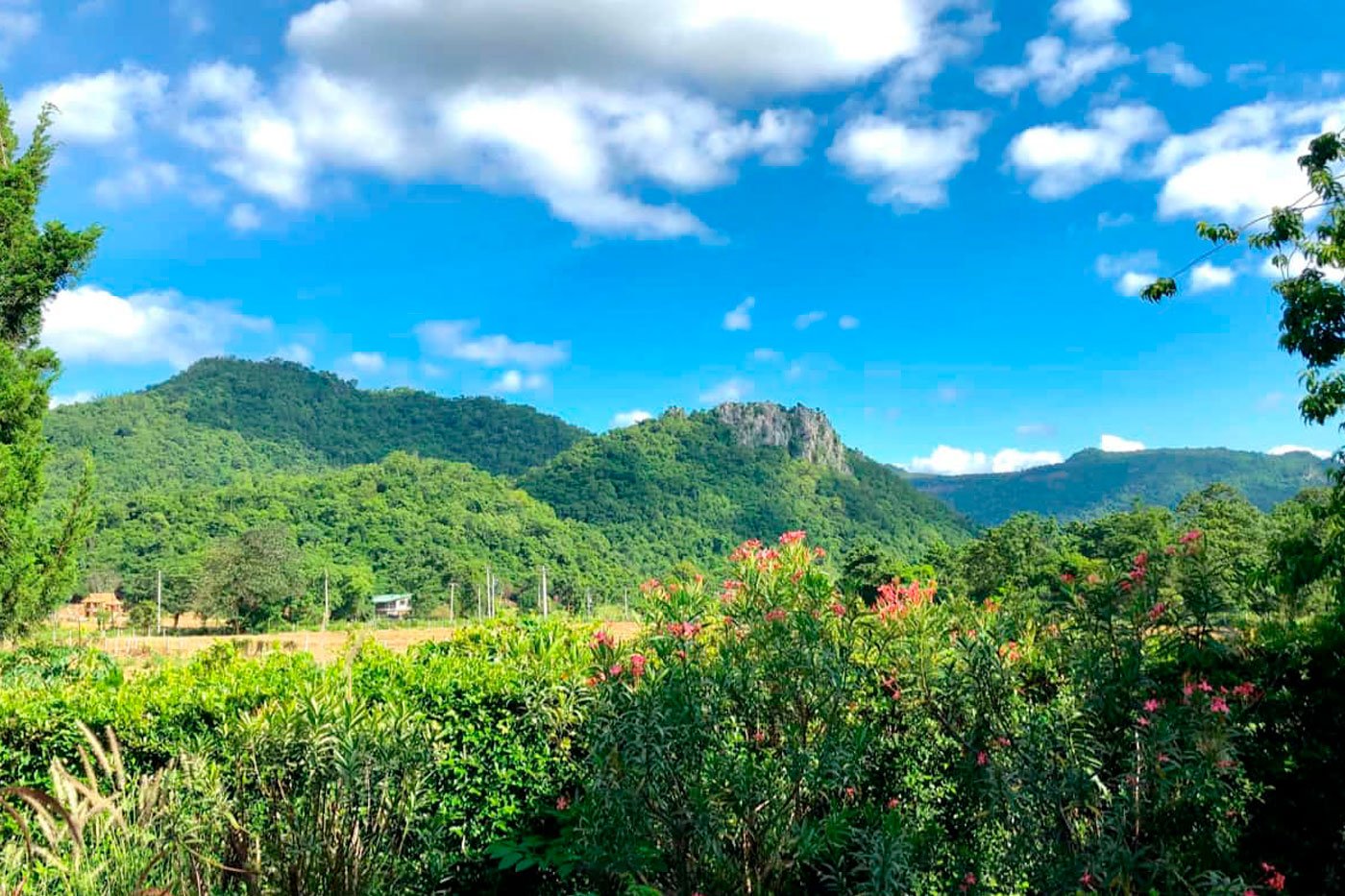
These famous markets have appeared in James Bond films and Spanish travel reports about people living abroad.
They’re called floating markets, although not all have water stalls. Some are located along the streets of the canals.
You can visit by boat and take a short ride for a few baht. Some popular markets include:
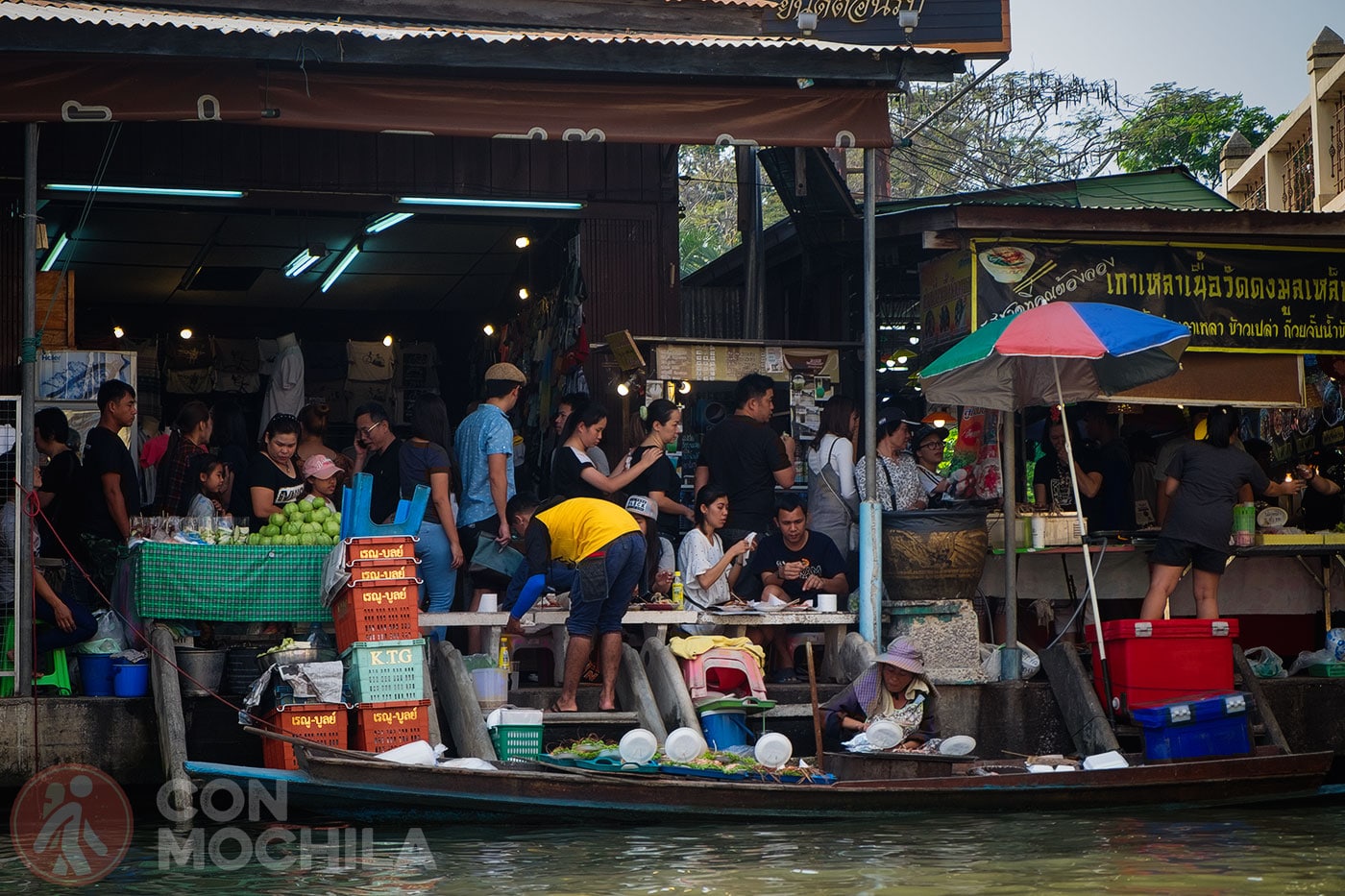
Damnoen Saduak and Amphawa are farther away (100 km and 80 km), but if you don’t want to travel that far, you can visit closer options like Khlong Lat Mayom, Bang Nam Phueng, Taling Chan, or Tha Ka.
The famous Mae Klong Market, often photographed, is located on train tracks. Each time the train passes, the vendors quickly move their awnings and stalls to let it through.
As the train passes multiple times a day, the setup is well-prepared for a swift move. The train slows down as it passes through, creating a thrilling moment for tourists.
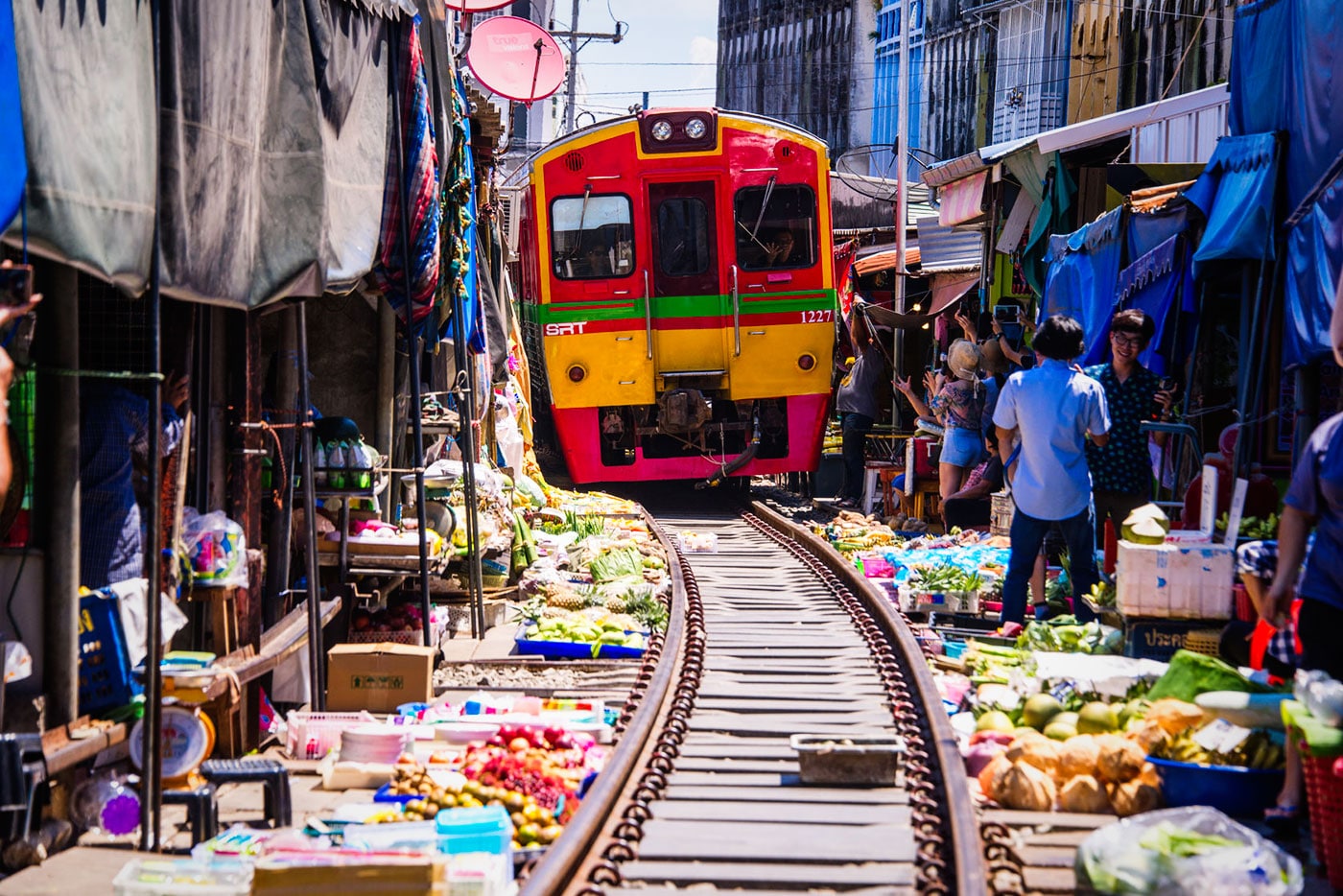
This market is usually combined with visits to the Amphawa Floating Market, often via minivan.
The accommodation options in Bangkok are vast and varied. You’ll find everything from budget hostels to luxurious five-star hotels.
We can recommend some mid-range and budget options. Recently, we’ve opted for large, affordable apartments to give our cat Songkran (who’s quite wild) more space.
Still, we’ve treated ourselves to stays in other hotels for more comfort. Of course, this means spending a bit more, but we’ve enjoyed each stay.
Check out our comprehensive guide on the 7 best areas to stay in Bangkok. You decide!
These are some quick recommendations for Bangkok:
A dark part of Bangkok is that here you can visit shows or activities that involve animal exploitation and abuse: hire excursions that take you on an elephant ride, see pachyderms that paint pictures and play soccer, take photos with living caged tigers, dancing macaques, shows with snakes…
We appeal to common sense and ask that you please inform yourself before making any decision and going to one of these places.

In order for these animals to be there entertaining tourists, they have had to be taught with sticks, many times they have been torn from their environment, even having to kill members of their family, and all of them are condemned to a life in captivity.
The final decision will be yours, but if you really like animals, informing yourself beforehand will help you avoid regretting having encouraged something you didn’t want. If you want to read more about the topic, we strongly recommend that you read the following articles (coming soon):
Eating in Bangkok is easy, you’ll find food on every corner. Street food stalls are everywhere, from markets to parks and tourist areas. Here, you’ll start enjoying the flavors of Thailand: the popular pad thai, noodle dishes, rice, soups, and curries.
There’s also a wide selection of vegetarian restaurants. You can read more in the articles Vegetarian Restaurants in Bangkok (coming soon) and Being Vegan or Vegetarian in Thailand (coming soon).
For a skyline dining experience, Cloud47 is one of the more affordable options. Located in the Silom area, it’s best to visit during sunset for drinks, then decide whether to stay for dinner.
Bangkok is easy to navigate thanks to its many transportation options. You can plan your route using the transitbangkok website.
Metro and BTS: These metro and sky train lines make it easy to get around the city, though it’s a pity that they don’t reach backpacker areas like Khaosan Road.
Bus: Buses are a cheap way to get around but remember that traffic during rush hours can be unbearable.
Chao Phraya River: You can take boat rides along the Chao Phraya River, combining transportation with sightseeing, as you’ll pass temples like Wat Arun.
Taxi: As a foreigner, taxi drivers may try to overcharge you, so insist that they use the meter (please!). In tourist areas, you may need to ask several drivers before one agrees. Uber and Grab taxis are legal in Thailand, so you can download their apps for convenience.
Tuk Tuk: In some areas, tuk-tuk drivers can be relentless and even annoying. However, they offer quick and affordable transportation to certain locations. Be cautious with offers in Khaosan, where they promise cheap excursions but hide the fact that you’ll have to stop at several shops for commissions.
Click on the image and it will take you to a new Google Maps window with all the points of interest to travel around Bangkok.